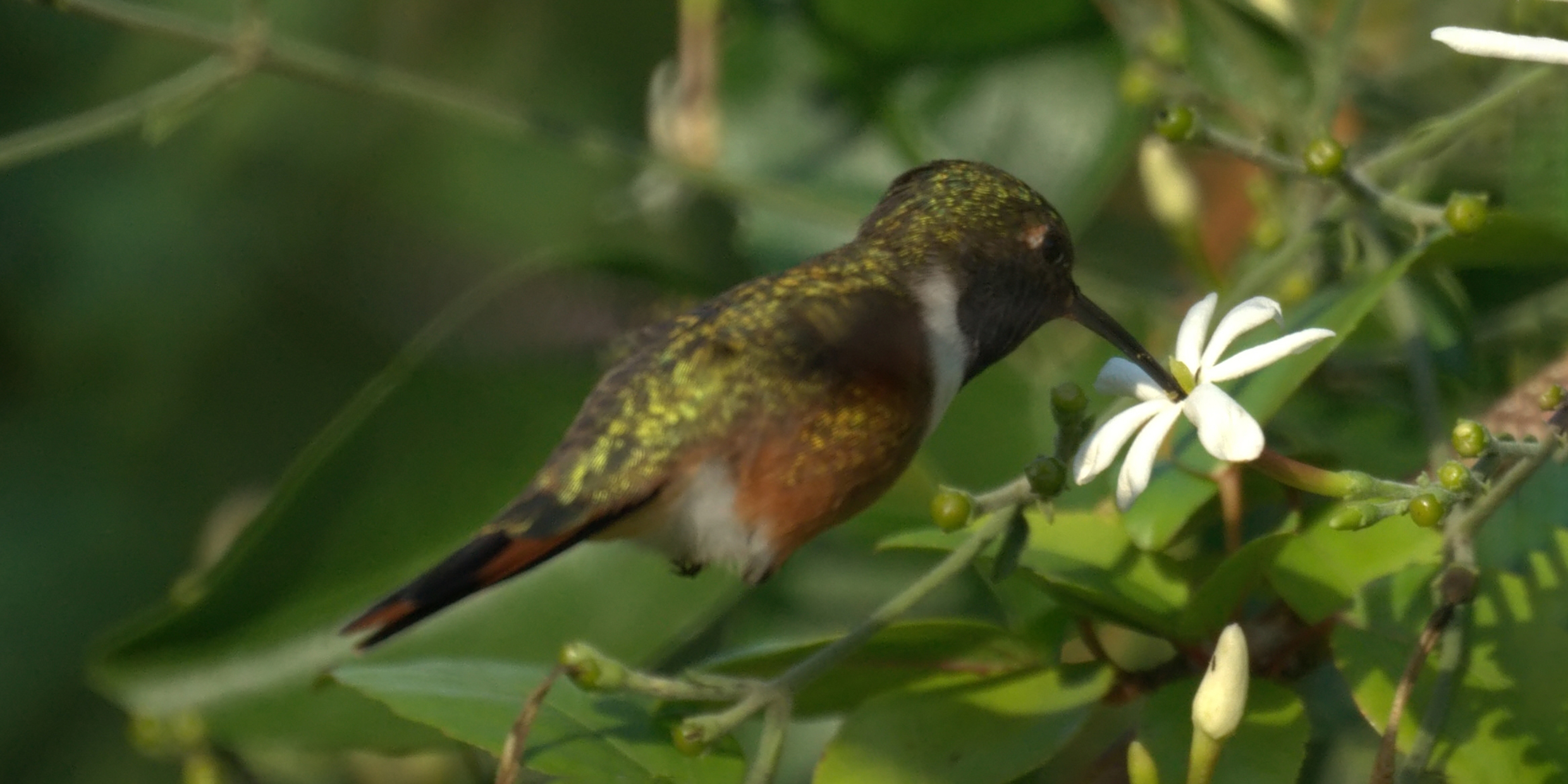Originally published 17 March 1997
EXUMA, Bahamas — Our previous visits to this island have been graced with hummingbirds: Bahama woodstars, no bigger than your thumb, caped in iridescent green, with amethyst faces, white breasts and soda-straw bills. They flitted about the garden on patrol, or paused in flight to investigate any bright object, even the embroidered flowers on my spouse’s hat.
The woodstar, like its larger and smaller cousins, is an animated gem. So beautiful are these tiny birds that they have been used for jewelry. During the 19th century, millions of hummingbird skins were exported from the Caribbean region to Europe and the United States as adornments for women’s clothing and hats. Today, we would rather see a hummingbird alive in the garden than stuffed on a hat, so at least that threat to the bird’s existence has receded.
Hummingbirds are exclusive to the Western Hemisphere, most particularly the tropics. They are among the few birds in the world that exploit the quick sugar-fix of flower nectar; they are the only bird that takes nectar while in full flight.
This time we came to the island with a hummingbird feeder, and filled it with red sugar solution. But no hummingbirds came to feed.
A bit of nosing around reveals that the hummingbird population of the island is depleted. Only the big birds — anis, doves, and mockingbirds, for example — appear to be resident in normal numbers.
The answer to the mystery of the vanished birds is presumably Hurricane Lili, which roared through the island last fall [in 1996], taking hundreds of roofs along with it. The hummingbirds of Exuma may have been victims of the big wind.
To be sure, these tiny birds are prodigious flyers. They move forward, backwards, even upside-down for a moment or two, and can hover helicopter-like as they feed from flowers. They have been clocked in wind tunnels at 30 miles per hour or more. However, Hurricane Lili packed winds of 115 miles per hour. Unless the birds somehow found refuge on the ground, they were carried away by the scouring storm.
Other islands near the hurricane’s path may have suddenly found themselves with more hummingbirds than usual, including dazed and battered blow-ins from Exuma.
The storm surely presented other difficulties for the birds.
Hummingbirds have the highest metabolic rates of any animals, a dozen times higher than a pigeon and a hundred times higher than an elephant. In hovering flight a woodstar’s wings beat at an incredible — and invisible — 80 times per second. Its heart beats 10 times faster than a human’s. To maintain these rates, a hummingbird must consume nearly its weight in nectar daily, which requires visits to hundreds or even thousands of flowers. That’s roughly equivalent to a human’s chug-a-lugging a bottle of Gatorade every five minutes of his waking hours.
An active hummingbird is never more than a few hours from starving to death.
A hummingbird can conserve energy at night and at times of scarce food by becoming torpid; that is, by lowering its body temperature and rate of metabolism. But it is hard to imagine a bird becoming or remaining torpid in the midst of a hurricane. I’ve only met one person on the island who claims to have slept through the storm (which occurred at night), and that was indoors, in bed, with the blankets over his head.
Hardly a leaf or twig on the island was unmoved or undamaged by the storm. It is hard to imagine where a hummingbird weighing a fraction of an ounce might have found torpid refuge. Unless it had the good sense to remain calm and go with the flow, any woodstar swept away by the storm must have perished of exhaustion.
So what we have here is an uneven encounter between two sun- driven dynamos: the Bahama woodstar and Hurricane Lili.
The thumb-sized woodstar, held aloft on a blur of motion, shimmering like jewelry, its powerful flight muscles jam-packed with mitochondria, the minute compartments in every cell that squeeze energy from sugar.
And the ocean-spanning hurricane, set in motion by the spinning Earth, sucking up sustenance from the sun-warmed sea, a thing of exquisite beauty in satellite photographs but terrifying and destructive to live through.
The woodstar: 100 millimeters from wingtip to wingtip. Hurricane Lili: 100 kilometers in diameter. The hummingbird a million times smaller than the hurricane that carried it away.
But we’ll leave our hummingbird feeder hanging, and fill it again next year. The woodstars will be back. They have survived countless storms in these islands; they occupy a niche in nature that no other creature can fill. These tiny birds burn like candle flames, but they are flames that will not be blown out even by a very big wind.



